From the start there was nothing unusual about The Saint John’s Bible, save that it was nearly 500 years after its time. The vellum, quill pens, hand-made inks and gold leaf were once the key ingredients to make a manuscript; but the printing press long ago sidelined those materials in the interests of efficiency and mass production. Still, Torah scrolls and the occasional college diploma (aka: sheepskin) remained the hold-outs until The Saint John’s Bible came along. Reaching for the materials of a former age, Donald Jackson used the ancient arts to produce a modern masterpiece.
By now The Saint John’s Bible is familiar to millions around the world. Less familiar is the story of how 1,400+ people joined together to bring it into being. In brief, donors sponsored verses, pages, books, volumes and illuminations. The smallest gift came from a cub scout troop, while the largest was a seven-figure gift. Together, along with all the gifts in between, they funded an immense undertaking. Together it was an expression of confidence that Donald Jackson would indeed make the word of God come alive on a page.
How could we possibly recognize all these people? How could we record a gift made in memory of deceased parents or to mark the wedding day of a young couple? A stone wall with all those dedications was wildly impractical, and a printed brochure seemed ridiculous for a project that created something meant to last a thousand years and more. Very quickly the Book of Honor emerged as the ideal solution.
I no longer recall whose imagination it was that gave birth to the idea, but it was there nearly from the beginning. The Book of Honor would be another volume to sit alongside the seven volumes of The Saint John’s Bible. Like the Bible, it would be made of vellum, and a quill pen would apply the hand-made inks and trim the gold leaf. It would be the same size as the Bible, with a binding that was identical. Better still, it would sit alongside the Bible for the next 1,000+ years. It would tell the unique story of how people in the early 21st century joined together to do something remarkable. Better still, it would tell who they were.
On 15 May 2016, we unveiled the completed Book of Honor at a ceremony at the Minneapolis Institute of Art. Diane von Arx, a member of the team of illuminators for The Saint John’s Bible and herself a resident of Minneapolis, had painstakingly created it from scratch. By any stretch of the imagination, what she had done was a stunning achievement.
The finished Book of Honor scarcely hints at the vast effort that went into it. For starters, one of my colleagues at Saint John’s, JoAnn Matheny, carefully began to record each and every gift and dedication as it came in, from day one. We knew that someday this information would be vital and needed to be accurate, and no one wanted to call people years later to ask how they wanted to be listed.
Next, the work of proof-reading was daunting. Just to be on the safe side, readers progressed through all those names backwards. Then it was Diane’s job to transform a bunch of names and memorials into something that would come alive on a page. And lively those pages are!
What’s next? With the Book of Honor complete, it now awaits its new home in the Bible Gallery currently under construction in Alcuin Library. There visitors will see not only the seven volumes of the Bible, but they’ll also see the eighth volume, the Book of Honor. Alongside it will be an electronic version, complete with an index that will allow viewers to turn to the page where their names appear.
By any standard this is a unique way to recognize the donors who have made possible what Pope Benedict XVI has called “a work for eternity.” In terms of donor recognition, the Book of Honor may or may not last for an eternity, but 1,000+ years is no mean feat.
[Editor’s note: On 15th June 2016 Cardinal Vincent Nichols bestowed on Donald Jackson a papal knighthood in the Order of Pope Gregory the Great. The ceremony took place in Westminster Cathedral in London, and there to witness the event were President Michael Hemesath, Abbot John Klassen and alumni and friends of Saint John’s from Minnesota, New York Los Angeles, Seattle, Sydney and elsewhere.]

